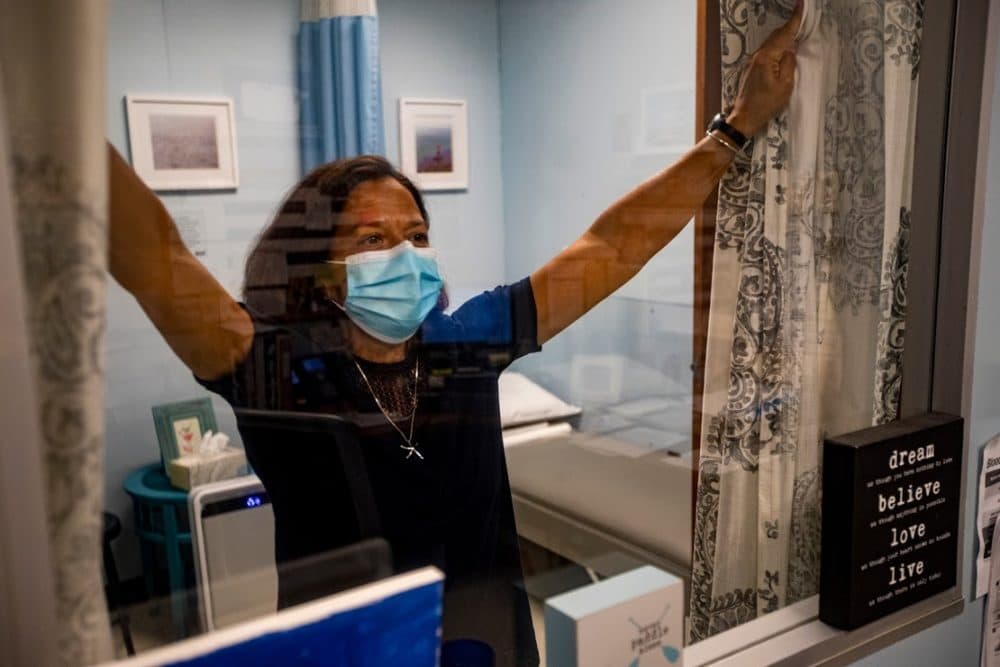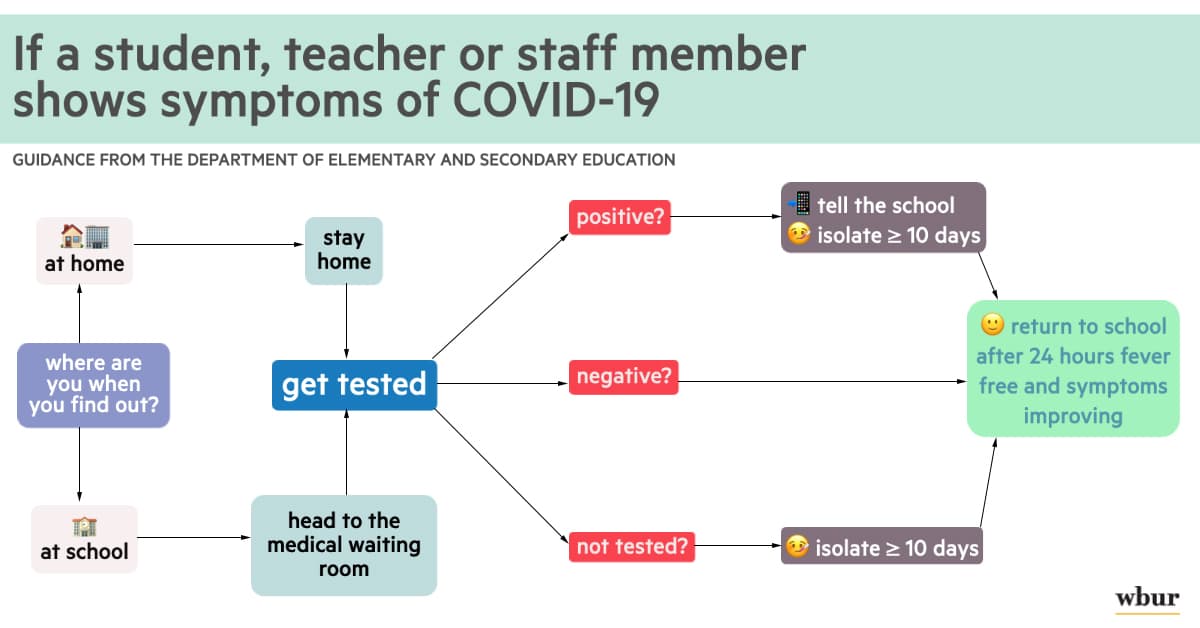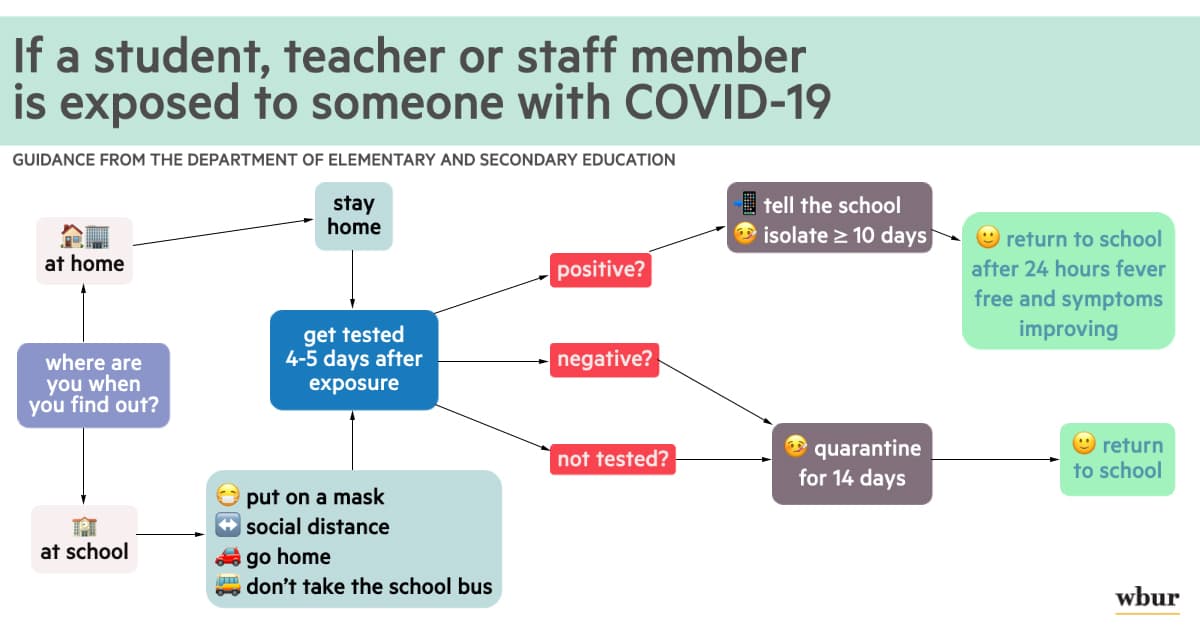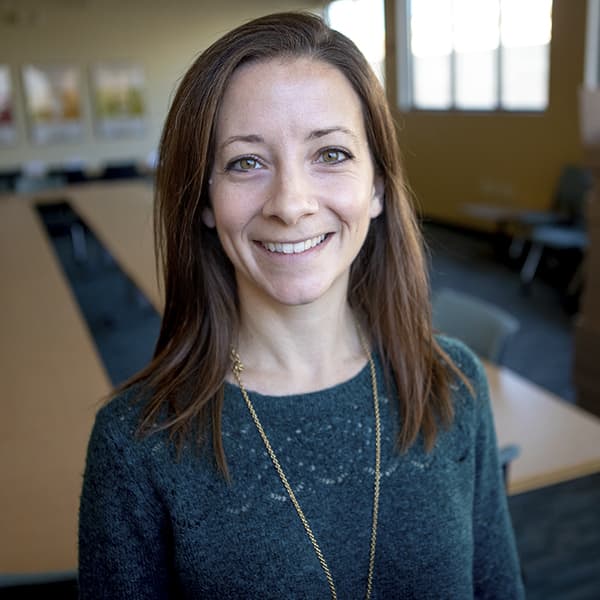Advertisement
Here's What's Supposed To Happen If There's A COVID-19 Case At School

As students and staff return to schools this fall, the Baker administration is trying to make coronavirus responses more consistent and is asking to be consulted on whether to close individual school buildings because of the coronavirus.
When COVID-19 first showed up in Massachusetts schools in early March, reaction varied widely by district. At first, some districts closed individual schools for a matter of days after suspected cases in a student, parent, staff member or visitor. Then in mid-March, there was a cascade of two-week closures, which were eventually extended for the rest of the school year.
The Massachusetts Department of Elementary and Secondary Education has been revising a set of protocols and guidance documents since July to help school leaders reopen their buildings and resume in-person learning. The state has been leaning on municipalities it's identified as low-risk to reopen to in-person learning.
While state officials said they have a high degree of confidence in how well the guidance can reduce the spread of the coronavirus, there will be instances when COVID-19 shows up in school communities again. This month, the state revised the protocols about how schools should respond to individual cases, and what to do before closing schools or districts. Officially, most of the state's response protocols are considered guidance for districts, so local policies may vary slightly. But here's generally what you can expect when COVID-19 is suspected or confirmed in your school, based on state recommendations.
A Symptomatic Person
If a student, teacher or employee has symptoms of the coronavirus, school leaders are expected to take steps to isolate that person from the rest of the school and keep them out of the buildings until a minimum of 10 days and 24 hours without a fever, or a negative test and 24 hours without a fever.

A Positive Test
If a student or school staff member tests positive for COVID-19 and informs school officials, districts are also required to report that to the Department of Elementary and Secondary Education along with information like the school name and whether the individual is a student, teacher, or staff member.
Tracking and contact tracing is still officially the job of the Department of Public Health, but state education leaders said they plan to use the information to offer districts assistance on how to respond. State officials said non-personally identifiable information from the school COVID-19 reports would be posted publicly every Thursday.
To reduce the spread of COVID-19 if a case is confirmed in a school, the state is recommending a similar response: isolate or quarantine. If student or staff find out during the school day they might have been exposed to someone with COVID-19, the clock begins at the date of exposure. So if you shared a backyard BBQ with your aunt over the weekend and find out Tuesday she tested positive, here's what should happen:
Advertisement

The state recommends that only "close contacts" isolate and get tested, not the entire classroom or school. A recent update to the state protocols defines "close contact" as any person who was within six feet of a COVID-19 case for at least 10-15 minutes or was coughed or sneezed on by someone with COVID-19 while not wearing personal protective equipment.
Closing A School Or District
So what happens if there are more than one or two individual cases in a school or district? If school leaders suspect the virus is spreading within the school outside of the small cohorts, district leaders may decide to close an entire school for cleaning (1-3 days) or opt for a 14-day quarantine period.
Before any final decisions are made on building closures school leaders must consult with the local boards of health and the Department of Elementary and Secondary Education for "further guidance."
